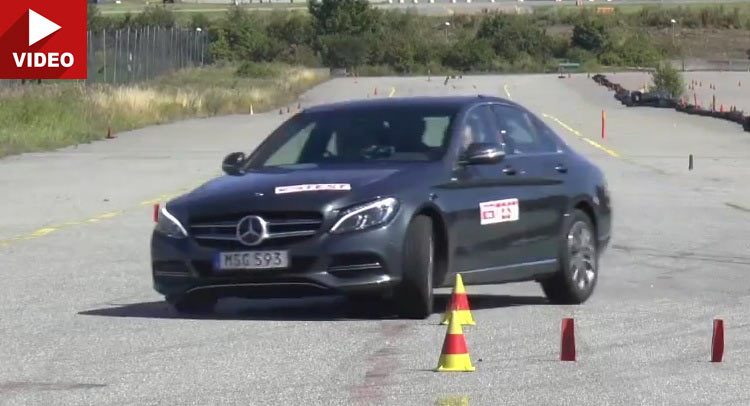Swedish Magazine Teknikens Värld is at it again, this time picking on the new Mercedes-Benz C350e, which could only manage a poor result during their Moose Test.
Also known as the Elk Test, it’s meant to determine how well a vehicle can evade an obstacle that jumps in its way all of a sudden. Usually a driver will slam on the brakes and perform the evasive maneuver, while hopefully maintaining control of the car and not running off the road.
Ironically, it was made famous when the first-gen A-Class and Smart failed big time, making Mercedes-Benz lose face (and money); but that was a long time ago.
Teknikens Värld tests lots of new cars every year and sometimes the results are unexpected. Remember what happened to the Macan last year? Or the Mondeo?
With that in mind, let’s try to analyze what happens when the C350e tries to avoid an imaginary moose, starting at 72 km/h (45 mph). The first thing we notice is that the car loses traction as soon as the driver yanks on the steering wheel – which is troubling, to say the least.
Apparently Teknikens Värld has already rejected Mercedes’ initial explanation that it could have all been due to low tire pressure. The car doesn’t do particularly better at 67 km/h (41.5 mph) either. In fact, it’s not until they ran the test at 64 km/h (40 mph) that the C350e passed with flying colors.
One would expect a modern-day premium saloon to pass this test easily. Is it the extra weight of the battery pack, which adds more than 100 kg? Maybe something else? Mercedes have said that during their own private tests, the car appears stable at speeds of up to 75 km/h (46 mph); and they probably won’t leave this unattended.



